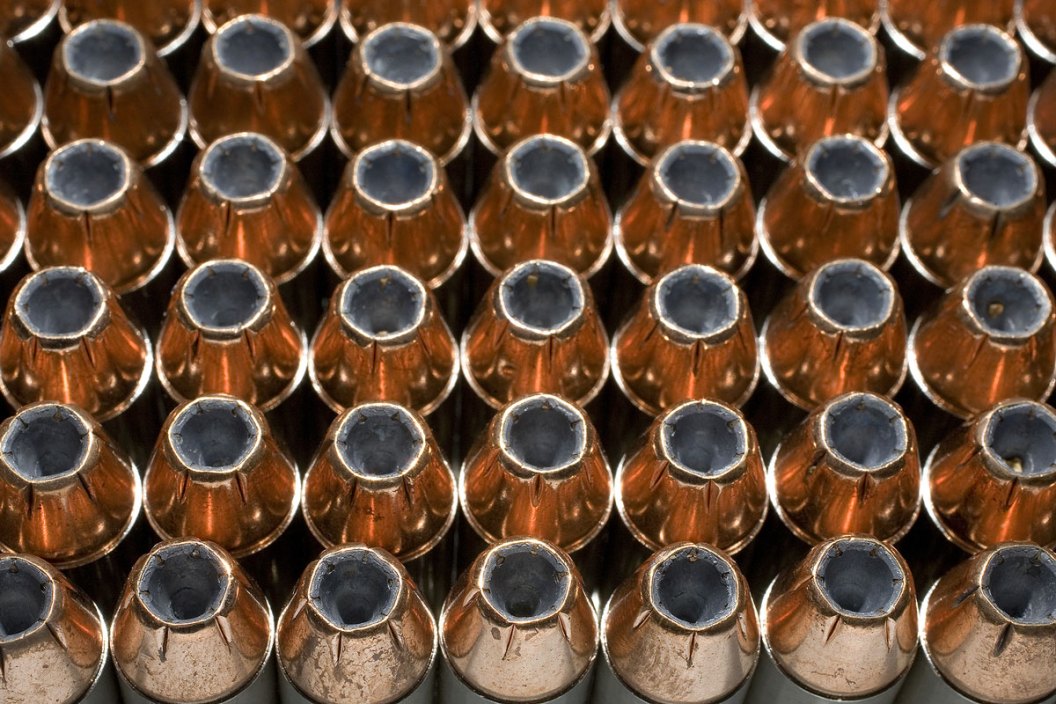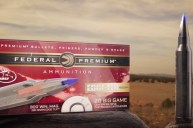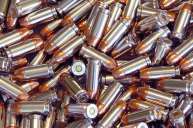Hollow-point ammunition offers many advantages for both self-defense and hunting.
The term "hollow-point" refers to ammunition that uses a hollowed-out bullet design, which allows for rapid expansion upon penetration.
Both handgun and rifle ammunition, as well as shotgun slugs, are available in hollow-point offerings. While there a wide variety of hollow-point bullet designs, they all have a few things in common.
The the expansion of a hollow-point not only prevents over-penetration, but it also causes more devastating wound channels, resulting in greater stopping power.
Full metal jacket rounds, also called ball ammunition, have a tendency to punch holes clean through flesh-and-blood targets. Not only does this not cause as much potential damage to the target, but it can also be a danger to bystanders who may be behind a target in a self-defense or law enforcement shooting scenario.
Earlier designs worked to mitigate this over-penetration by having partially jacketed bullets with an exposed soft lead tip that would mushroom. Many popular hunting bullets still work this way.
These properties were sort of discovered by accident in the late 1800s when hollow-point bullets were created as "express" bullets. The idea was that by hollowing out the center of the bullet, you would retain its shape and structure while reducing weight, which would produce higher velocities and increased accuracy. It was discovered that these lead bullets expanded very reliably.
When smokeless powder came along with its increased pressures and muzzle velocities, bullets got smaller and faster, and they also needed to be jacketed to handle all those forces acting on it and not become deformed.
So, full metal jackets were created with a copper jacket around a lead bullet with either round-nose or pointed (spitzer shape) tips. The jacket also greatly reduced lead fouling in the bore. But, of course, they didn't expand well at all. Once bottleneck cartridges were introduced and velocities got high enough, the speed caused plenty of expansion with a tapered FMJ.
Then came the soft points and eventually the modern jacketed hollow-point bullets. They came in the form of the British "dum dum" bullets, in .303 British and .455 Mk III "Manstopper" rounds. They caused so much damage that the bullet designs and all hollow-point rounds were outlawed for use in war by the Hague Convention of 1899—but hunters saw the advantages of their stopping power.
Today, hollow-point designs are primarily used in defensive or duty handgun ammunition with various designs, all endeavoring to provide the most reliable expansion and mushrooming effect.
Some jackets are thinner near the front than the rear to allow for easy expansion initially, but then ultimately reduced expansion.
Partitioned jackets have a partition in the middle of the bullet's core to stop expansion at a given point so the bullet doesn't fragment into tiny pieces.
Some bullets have their lead core bonded to the copper jacket to prevent separation and fragmenting and increase weight retention. Other jacketed are fluted or strategically weakened to encourage wide expansion or even fragmentation.
Some Federal hollow-points have a post in the hollow cavity that causes hydraulic expansion of the bullet when it hits tissue.
However, most hollow-points have a disadvantage: if the hollow cavity becomes plugged with heavy clothing, they will not expand reliably. Bullets like the Hornady V-Max solve this problem by adding a plastic insert in the cavity that initiates the expansion and prevents it from being clogged.
Today, hollow-point ammo is a favorite for self-defense, home-defense, and for law enforcement.
However, certain types of hollow-points are used for target shooting because they are more accurate than conical bullets. The large meplat increases accuracy, kind of like a wadcutter bullet.
NEXT: FIRST LITE DEBUTS WHITETAIL CAMO LINE
WATCH





